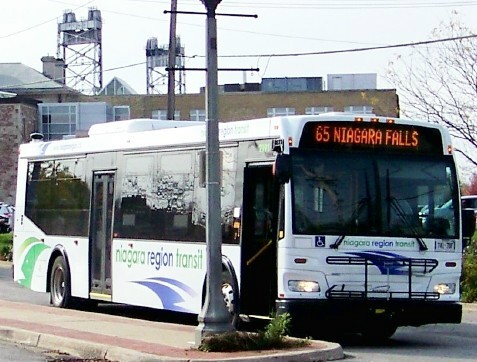
Editor’s note: continuing on this week’s theme, today’s post is from a Spacing Ottawa contributor who has recently relocated to another city. Like Adam Bentley in Edmonton, David McClelland has taken his curiosity and urbanist point of view with him to a new home in the Niagara region.
A geographer by training, Dave was also the editor of the excellent “Ottawa Project”, now in hiatus while he works through a a post-graduate certification in Environmental Management and Assessment at Niagara College.
I came across this article in the St. Catharine Standard last week, and it’s been on my mind since then. In the fall, when I first moved to the area, the Regional Municipality of Niagara introduced a regional transit system, which runs between the major urban areas in the region: St. Catharines, Niagara Falls, Welland, Port Colbourne, and Fort Erie. In theory, it seems like the perfect place for such a system, as these five cities contain a total of approximately 313,000 people, including over 30,000 post-secondary students. But the buses are extremely quiet, and I’ve seen some criticism on the Internet that the system is just a waste of money. So what to do? Does it make sense to continue throwing money into a regional transit system that has seen very slow ridership growth? If you know me, you may not be surprised to learn my answer is “yes.”

The problem with creating a new transit system is that it requires time to become popular. It’s nearly impossible to have a new network become instantly successful, especially in an area that’s dominated by automobile transport like the Niagara Region. So it’s not really any great shock to me that ridership growth has been slow.
But that still leaves the question of why it’s worth funding a still unpopular system. Well, the first thing to consider is the fact that it’s too easy to try to evaluate transit systems by their profitability, which is the wrong metric. We don’t evaluate publicly funded roads by whether or not they turn a profit (if we did, we’d probably stop building them), so why do it for transit? Especially when you consider the fact that transit, by its nature, will recoup some of its operating costs, while roads will never do so.

The Region has developed a clean, logical, and attractive system. The population base is there to provide reasonably high levels of ridership. All that remains is to give the system time to develop a good base of regular riders. And if the system loses money for a little while longer, then so be it. It’s an investment, not a business, and it’s important to remember what the difference is. With time, it’s entirely possible that a gradual shift in the way people get around the region will occur, and ideally residents will find themselves in a position where they can use their cars less. That’s the ideal, and it will only happen if we let it.
top photo by Paul Bica
